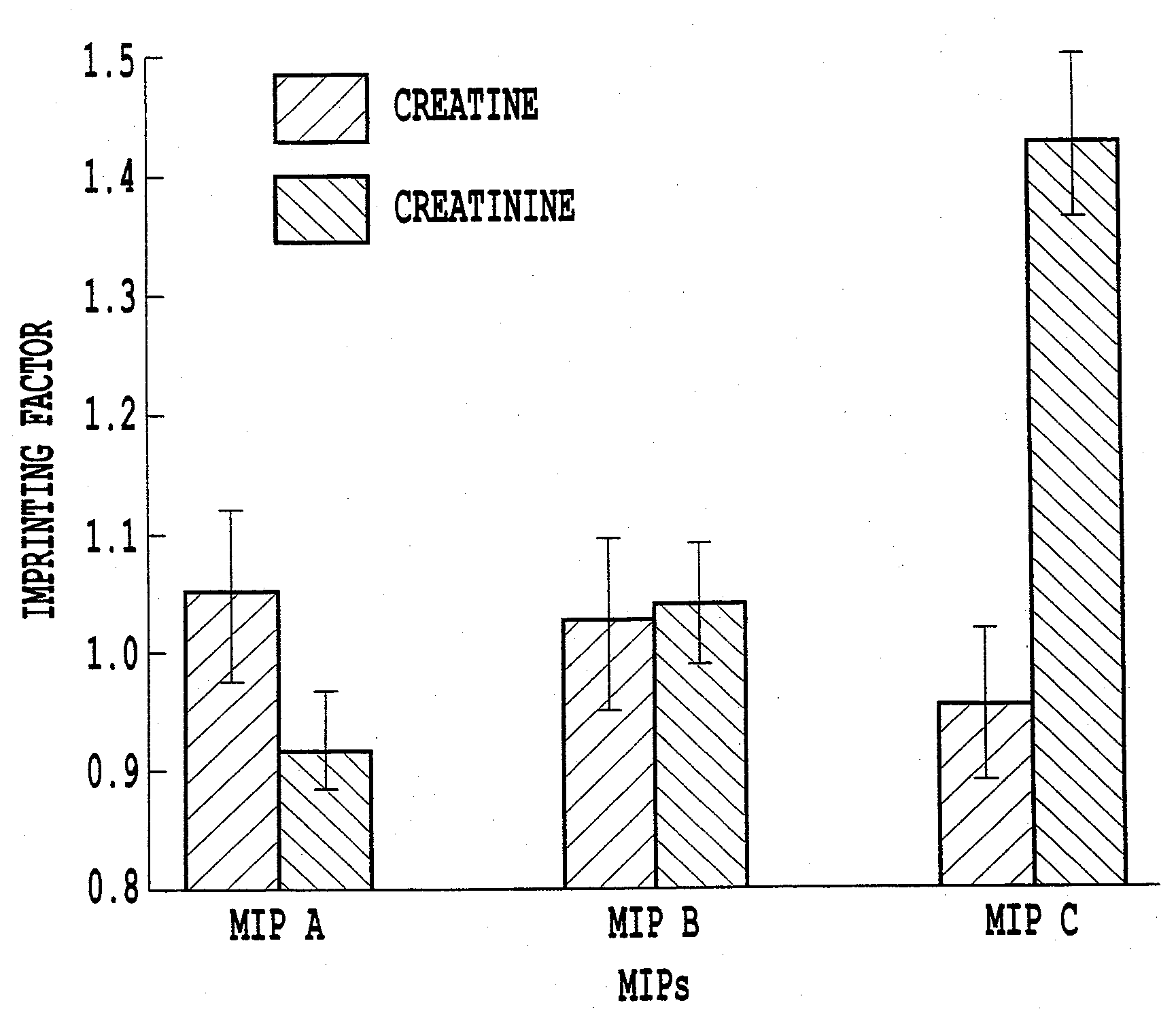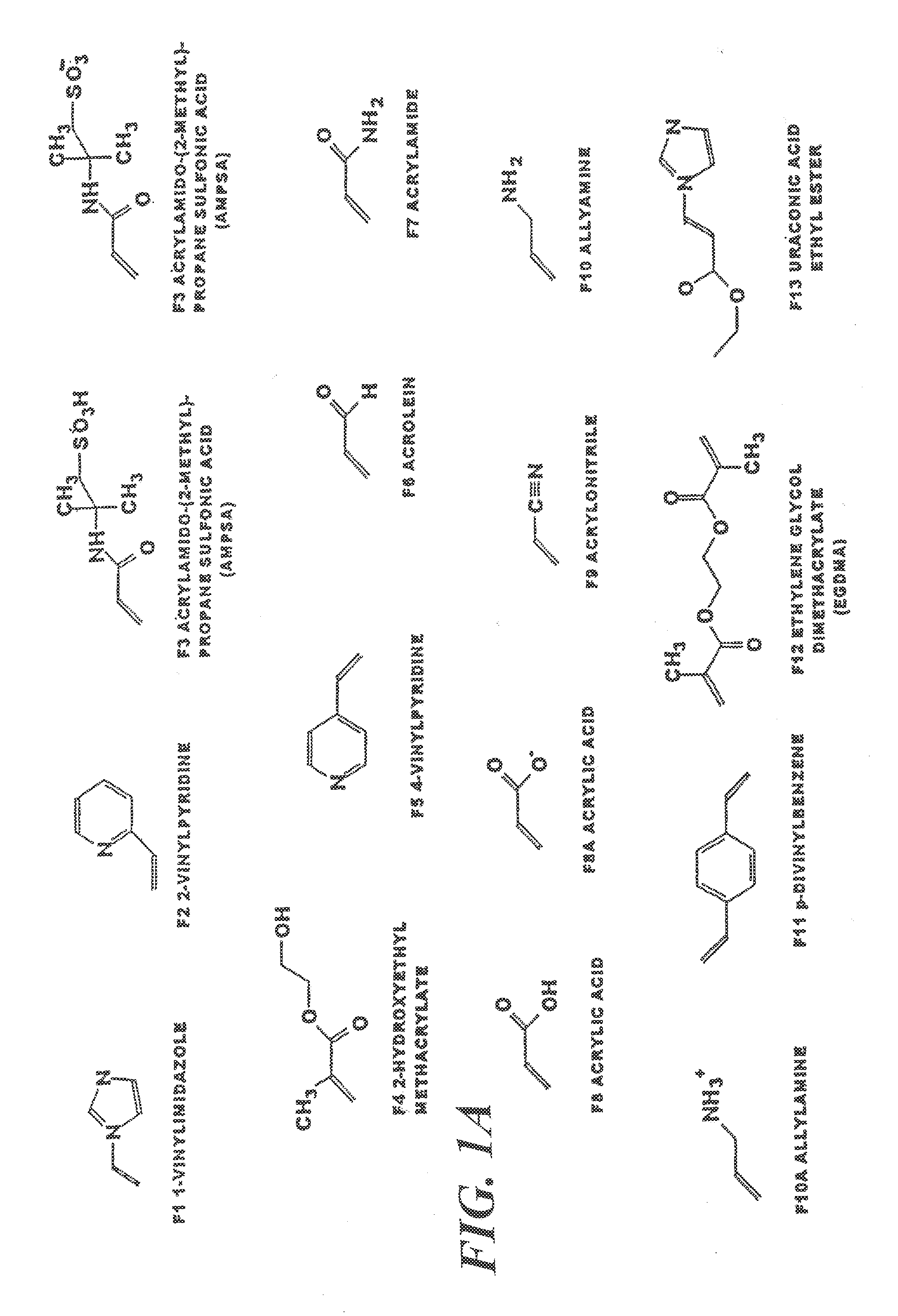Molecularly imprinted polymer
a technology of imprinting and polymer, applied in the field of molecular imprinting polymer, can solve the problems of lack of a general procedure for polymer synthesis and practicability
- Summary
- Abstract
- Description
- Claims
- Application Information
AI Technical Summary
Benefits of technology
Problems solved by technology
Method used
Image
Examples
example 1
Computer Aided Design of an MIP Specific for Atrazine
[0025]a) The workstation used to generate molecular models and perform simulation was a Silicon Graphics Octane running the IRIX 6.4 operating system. The workstation was configured with two 195 MHz reduced instruction set processors, 712 MB memory and a 12 Gb fixed drive. The system was used to execute the software packages SYBYL (Tripos). The virtual library contained the most frequently used functional monomers able to form non-covalent interactions with the template atrazine. These are methacrylic acid, acrylic acid, itaconic acid, acrolein, acrylamido-(2-methyl)-propane sulfonic acid (AMPSA), 2-vinylpyridine, 4-vinylpyridine, 1-vinylimidazole allylamine, N,N′-diethyl aminoethyl methacrylamide (DEAEM), acrylonitrile, 2-hydroxyethyl methacrylate, p-divinylbenzene, m-divinylbenzene, urocanic acid, urocanic ethyl ester, ethylene glycol dimethacrylate, N,N′-methylene-bis-acrylamide, styrene, acrylamide and, where appropriate, thei...
example 2
Computer Aided Design of the MIP Specific for Creatinine
[0037]a) The virtual library used for the design of an MIP specific for creatinine contained 20 monomers as used in Example 1 and one additional monomer—polymerizable thioacetal formed by allyl mercaptan and o-phthalic dialdehyde, which was necessary for creatinine sensing. Creatinine analogue —N,N′-dimethylcreatinine was used as a template instead of creatinine in order to prevent covalent interactions between the template and the functional monomers. The computer simulation was performed in the same way as described in Example 1. The optimized composition contains template-monomers ratio 1 (N,N′-dimethylcreatinine):3 (thioacetal):1 (urocanic ethyl ester) (FIG. 5).[0038]b) Three polymers were synthesized using a conventional selection of monomers (with cross-linker only and with methacrylic as functional monomer) and computational selection. Three additional blank polymers were prepared in the absence of template. The composit...
PUM
| Property | Measurement | Unit |
|---|---|---|
| pH | aaaaa | aaaaa |
| particle size | aaaaa | aaaaa |
| particle size | aaaaa | aaaaa |
Abstract
Description
Claims
Application Information
 Login to View More
Login to View More - R&D
- Intellectual Property
- Life Sciences
- Materials
- Tech Scout
- Unparalleled Data Quality
- Higher Quality Content
- 60% Fewer Hallucinations
Browse by: Latest US Patents, China's latest patents, Technical Efficacy Thesaurus, Application Domain, Technology Topic, Popular Technical Reports.
© 2025 PatSnap. All rights reserved.Legal|Privacy policy|Modern Slavery Act Transparency Statement|Sitemap|About US| Contact US: help@patsnap.com



